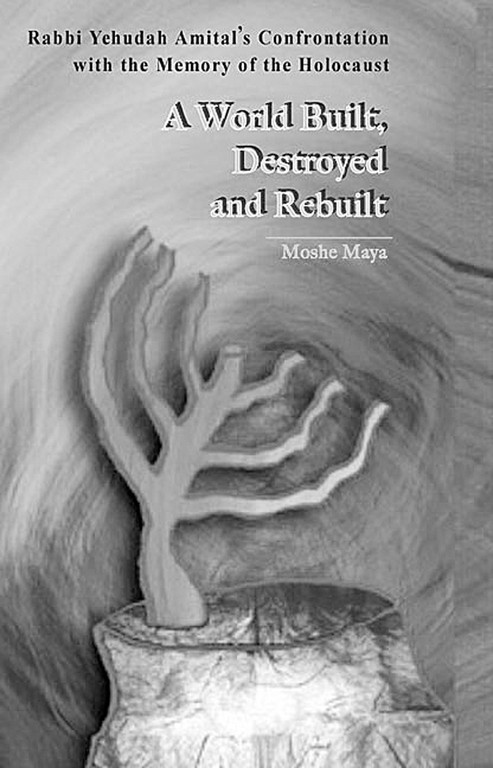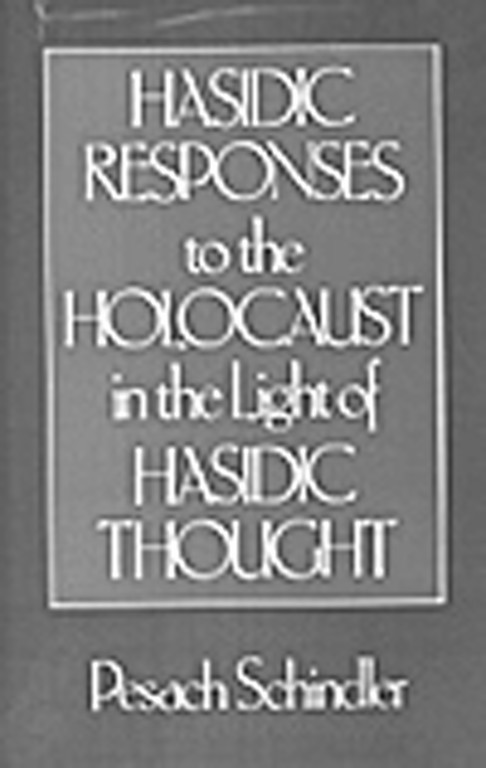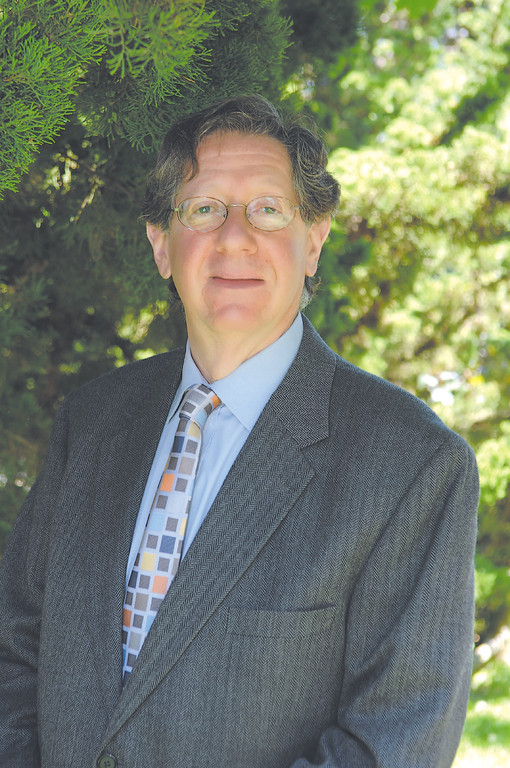The Kosher Bookworm The Holocaust scholarship of Pesach Schindler
In last week’s tribute to the sacrifice of Rabbi Menachem Ziemba, one of the scholars referenced was Rabbi Dr. Pesach Schindler, whose information concerning Rabbi Ziemba was crucial to my essay’s theme and purpose.
In response to numerous inquiries concerning Dr. Schindler and in commemoration of the upcoming Yom Hashoah observances in our community, I am reprising several previous essays of his literary works on the Holocaust as well as works by others on this timely subject.
In last week’s essay I referenced Dr. Schindler’s work entitled, “Hasidic Responses to the Holocaust in the Light of Hassidic Thought,” [Ktav, 1990].
This unique work brings together the theology, sociology, as well as the history of the Hasidic world and thought thus giving us the tools to better appreciate the horrible sacrifice that these Jews sustained during the Holocaust era. Dr. Schindler accurately demonstrates how, for the most part, the Chasidic response thwarted the de-humanizing of these Jews by the Nazis, and further explains the actions that many took in the spiritual realm to resist Nazi persecution under the cruelest conditions.
In this work are detailed basic Chasidic doctrines describing the concepts of evil as understood in Jewish theology and Chasidic hashkafa, the concept of Kiddush Hashem and Kiddush Hachayim, the relationship between the tzadik and the chasid, and Chasidic thought relating to legitimate resistance to their Nazi oppressors.
Rabbi Schindler, the teacher that he is, demonstrates a great respect for his readers inasmuch as this work is written in a dignified and scholarly manner, fully footnoted and annotated in non-technical language.
One of the most intriguing parts of this work was the chapter dealing with exile and redemption, especially those parts dealing with the teachings and demeanor of both Rav Yissachar Teichtal and the Piasecznar Rebbe, Rav Kalonymos Kalmish Shapiro, both of martyred and of blessed memory.
Reading this section, as well as that on Rav Ziemba and of his activities in the Warsaw Ghetto, is a must by anyone and everyone to enable all to better understand the Holocaust tragedy in its fullest meaning for us today.
These three martyred rabbis, through their teachings and actions, have a lot to teach us in our time so as to enable us to better appreciate the great dedication and sacrifices being made by our brothers and sisters in Israel. They, as well as many others, surely serve as role models for ourselves and our progeny, to teach the proper course of action that has to be taken on behalf of the protection of our faith and of our people.
Rabbi Schindler’s other work was a translation of Rabbi Teichtal’s work “Eim Habanim Semecha,” “Restoration of Zion As A Response During the Holocaust” [Ktav, 1999]. While this is not the only translation of this work, what makes this translation different is that Dr. Schindler does not treat it as a literal translation but, rather as a learning experience, designed to be informative, with detailed footnotes that will enable the reader to conduct further research in an organized and informed manner.
In his eloquent introduction to this work, Rabbi Dr. Walter Wurzburger, of blessed memory, wrote the following insightful observation:
“It enables even readers unfamiliar with the historic background to appreciate the momentous nature of Rabbi Teichtal’s ‘conversion’ from radical anti-Zionism to a passionate advocacy of religious Zionism.” Given recent events in the Holy Land, this take by Rabbi Wurzburger is most poignant.
Many are the tragedies faced by our people over our long history. And over this time, the chronicles of these events have filled the pages and books that were intended to be preserved for all time.
Such events as the 17th of Tamuz, the 9th of Av, the 10th of Teves, are but just a few of those. There were others that were once observed but did not survive the test of time; there were to be many more. Among these others were the 23 of Shevat, January 18, 749, the 20th of Sivan, May 26, 1171, and June 10, 1648, and many other dates that came to dot the bloodstained pages of Jewish history. These historical data, as researched by and written about by Rabbi Dr. David Golinkin of Jerusalem, only serve to remind us of the lack of true education and commemoration among many of us in our many communities concerning the Holocaust. The dates cited above, as researched by Rabbi Golinkin and others, point to the fact that in previous generations almost every persecution was given its due on the Jewish calendar, something that is lacking among many of us today as it concerns even the most tragic dates of the Holocaust both in our schools and in our shuls. Now, let us take note of current events.
This past week, March 29, 2013, the following piece of information was reported by the International Business Times with the following headline: “Israel Supplants U.S. As World’s Largest Jewish Population Center, Passing Six Million Mark.” One just has to stare at this headline for just a brief moment to grasp the depth of the implication of this news item. And there is more.
Another fact was reported in this same dispatch. Prior to 1939, the world Jewish population was 18 million people. Today, 2013, there are fewer than 14 million Jews in the world, according to Prof. Sergio Della Pergola of Hebrew University.
In this same piece, Israeli historian Tom Segev stated the following:
“But within five, seven or 10 years, you might be able to say that most Jews in the world live inside Israel and it will be legitimate to use the cliché that for the first time in 2,000 years, the Jews are in Israel.” I think what he meant was that pretty well soon the majority of world Jews will be found in Israel. And, Israel is indeed where the action is today.
From the tragedy of the Holocaust, many of us will soon be celebrating Yom Ha’atzmaut, the 65th anniversary of the founding of the State of Israel.
As with the Holocaust, there are many among us who find it hard to find spiritual expression in the observance of this day and to acknowledge its spiritual significance.
Accordingly, please consider the depth of meaning in the following quote and observation by one of our people’s greatest spiritual leaders and teachers, Rabbi Yehuda Amital, of sacred and blessed memory, a Holocaust survivor, and founder of the Hesder yeshiva movement.
Please read his words carefully, and seek out his works for your edification. These include, ”Commitment and Complexity,” and “Jewish Values in a Changing World.”
And there is a detailed biography, “A World Built, Destroyed and Rebuilt” by Moshe Maya.
Rabbi Amital teaches us the following: “How can we not thank the Almighty for all the kindness that He has showered upon us? First and foremost, the State of Israel serves as a safe haven for five [now six] million Jews. After the nightmare of the Holocaust, hundreds of thousands of Jewish refugees wandered around the globe, finding a home and refuge only in Israel. The State has contributed an incalculable amount to the restoration of Jewish pride after the devastating chillul Hashem caused by the Holocaust.
“I experienced the horror of the destruction of European Jewry, and I can thus appreciate the great miracle of Jewish rebirth in our homeland. Are we not obligated to thank the Almighty for his kindness toward us? Unquestionably! And not just on Yom Ha’atzmaut….”
Tying these two experiences together represented a real life’s experience for millions of our brethren sixty five years ago. Their life’s journey took many of them from the gates of the gas chamber to the battlefields of Israel. Rabbi Amital, by his sacred example, and Yeshivat Har Etzion and its success as the founding hesder yeshiva for all Israel, serve as a living link for all of us to commemorate and then to celebrate.

 44.0°,
Mostly Cloudy
44.0°,
Mostly Cloudy 









